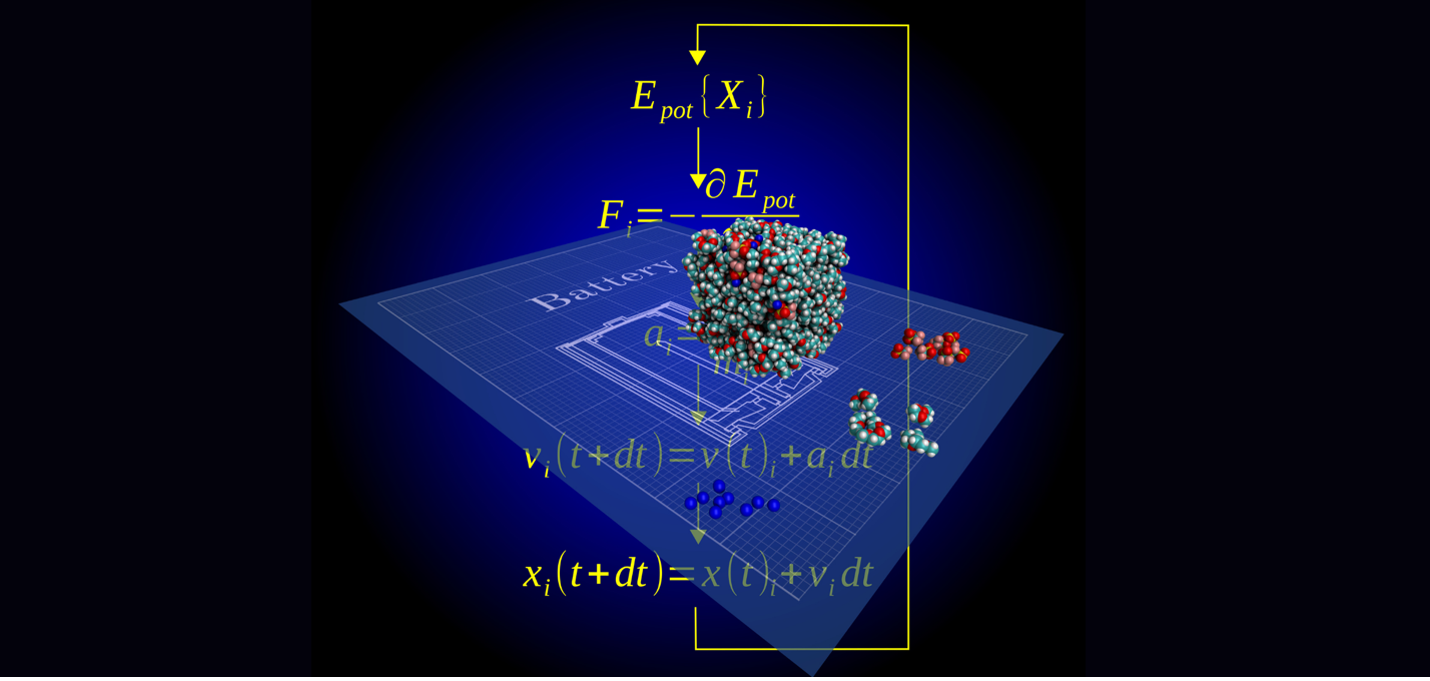Powering the future: Investigating solvate ionic liquids for battery advancement
June 28, 2022

LSU Chemistry Associate Professor Daniel Kuroda and collaborators are investigating solvate ionic liquids for promising applications in battery technologies beyond lithium.
BATON ROUGE- Countering climate change calls for reducing reliance on fossil fuels and increasing the use of cleaner and more sustainable energy sources. Batteries are a vital part of the energy transition because they can be combined with intermittent alternative power sources that do not have the planet-warming effects of fossil fuels.
Lithium-ion batteries are a popular power source for cleaner technologies, such as hybrid and electric vehicles. However, in recent years, sodium has been presented as a viable replacement for lithium due to its low cost and natural abundance.
Developing non-lithium batteries with high energy density requires research on electrolytes, the chemical solutions inside batteries that are essential for producing electricity. Solvate ionic liquids, an equimolar mixture of a metal salt with a solvent, are an emerging subclass of ionic liquids with promising applications in battery technologies beyond lithium.
Solvate ionic liquids are formed because the solvent, glycol dimethoxy ethers or glymes, wraps around the metal ion producing a liquid electrolyte with increased thermal and electrochemical stability. Hence, understanding the interactions between the ions in the salt and solvent in these electrolytes is important for producing tailored solvate ionic liquids for battery applications.
“One challenge we have is that we can’t measure interactions. For example, we can’t tell you how an anion and cation interact, but what we can do is map dynamics and structure, which define the interactions,” said LSU Chemistry Associate Professor Daniel Kuroda.
To investigate these interactions, the Kuroda research group uses a comprehensive approach that combines both experimental and computational methods. While experimental methods allow them to test the molecular state of the system and its physico-chemical properties, molecular dynamic simulations can provide a molecular level picture of the different processes occurring in these electrolytes.
Previously, the Kuroda group and two other teams, LSU Chemistry Associate Professor Revati Kumar and Associate Professor Ryan Jorn at Villanova University, investigated the effect of the chemical composition of different glyme-based electrolytes, the research team determined that glyme chain length has directly impact in the charge transport mechanism of these electrolytes.1,2
Kuroda and the two collaborators recently received a grant from the National Science Foundation to continue this work and expand their investigations to the structure and dynamics in a larger family of solvate ionic liquids.
The Kuroda research group will conduct experimental studies for the grant, while LSU Chemistry Associate Professor Revati Kumar and Associate Professor Ryan Jorn at Villanova University will perform the computational models. Using a mixed-methods approach, the research team envisions building a molecular level picture of the interactions occurring in these new solvents.
“If we can learn the systems at the molecular level, we can start making educated guesses on how to modify the systems so they can do the things we want,” said Kuroda. “We also hope to find something interesting that may change the way we look at different structure parameters and interactions that we haven’t considered.”
-
- Galle Kankanamge SR, Li K, Fulfer KD, Du P, Jorn R, Kumar R, Kuroda DG. Mechanism behind the Unusually High Conductivities of High Concentrated Sodium Ion Glyme-Based Electrolytes, Journal of Physical Chemistry C, 2018, 122, 25237-25246.
- Li K, Galle Kankanamge SR, Weldeghiorghis TK, Jorn R, Kuroda DG, and Kumar R. Predicting Ion Association in Sodium Electrolytes: A Transferrable Model for Investigating Glymes, Journal of Physical Chemistry C, 2018, 122, 4747–4756.